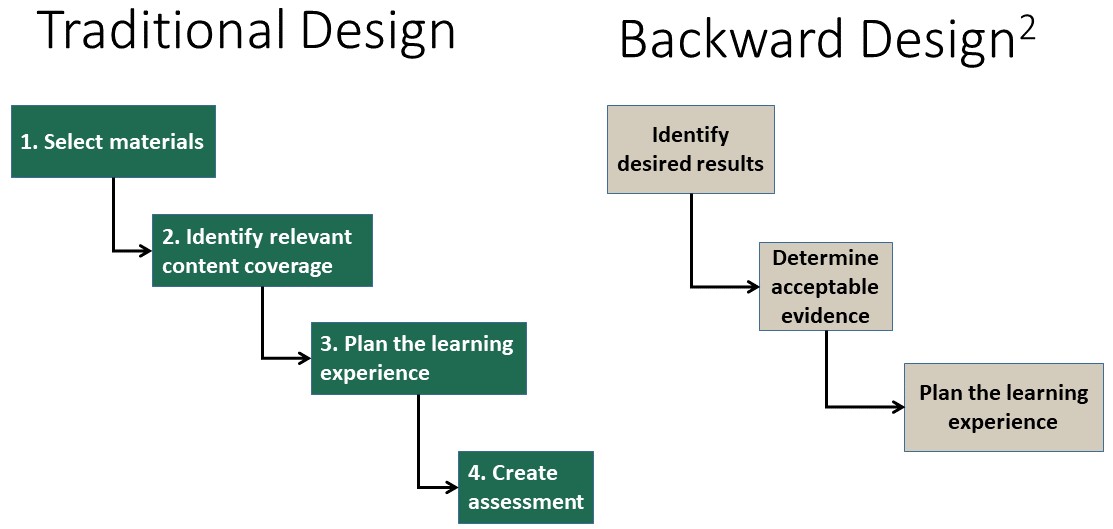Content Design: An Overview
Backward Design
Wiggins and McTighe identify "twin sins" of traditional design: engaging learners without specific purpose; attempting to cover all material related to a topic without considering its value2. The missing element is intellectual goals - what do we want the audience to learn? Are there any big ideas guiding the instruction, and is there a plan to ensure that participants learn those big ideas?
Unlike killing werewolves, there's silver bullet to ensuring that people understand what you want them to understand, but this approach is useful in that it provides a systematic and purposeful way to look at an activity, lecture, or session, to determine if it meets the goals of the learner.

In this model we first consider the goal of the presentation: what do we want the participant to know or achieve? Secondly, how will we know that the participant has achieved the desired result? And then we plan the learning experience that we believe will facilitate achievement of the desired result.
The learning experience might be based on:
- Enabling knowledge: facts, concepts, principles; and/or
- Skills: processes, procedures, strategies
So we're selecting teaching method, topic sequence, foundational and resource materials only after we identify desired results and how those results could be assessed. If you'd like more details, there's additional information in the section presentation design principles.